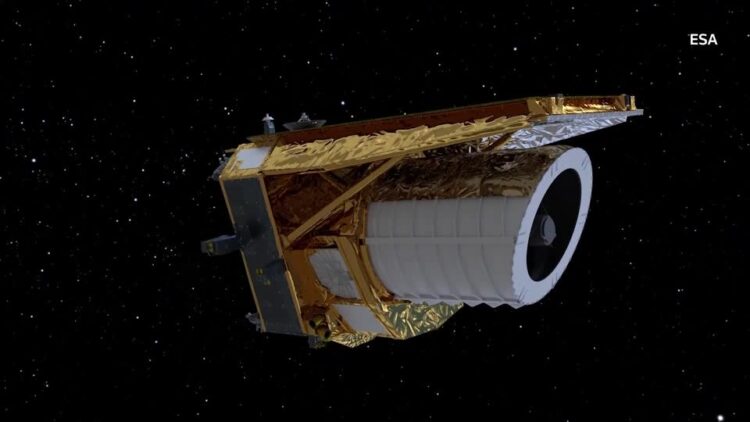STORY: With all the light in the universe – it’s what we can’t see that remains a mystery.
The European Space Agency (ESA) hopes to change that.
Its ‘Euclid’ space telescope will cast its gaze ten billion light years into the past… in the hope of answering unresolved questions about dark matter and dark energy.
Euclid weighs about the size of a small car.
When it blasts off into space it will journey about a million miles from Earth to the second Lagrange point, a similar orbit to NASA’s James Webb Telescope.
With a sunshield protecting it, the telescope will be sitting very dark and very cold – exactly what’s needed for Euclid to do its work.
That’s according to Andreas Rudolph, Euclid’s flight director.
“The astronomer calls everything he cannot see dark. And basically, dark energy and dark matter does not interact directly with light, so it passes through. So, we can’t see it directly. However, it interacts with light via gravity. Gravity is distorting space. And effectively, light will follow the shortest path, which is basically following the distorted space. And therefore, we can sort of see it.”
Over the next six years Euclid will scan around 35% of the entire sky – that’s several billion galaxies – looking for signs.
“It Is like a bit of, you know, lensing effectively, you know, matter that you have between you and the galaxies you’re trying to look at, acts like a lens.”
Euclid’s imagery will be used to create the largest and most accurate 3D map of the universe, according to the ESA.
Scientists will use the data to analyze the distribution of dark matter and dark energy.
“We are looking back in time by ten billion years and trying to understand how the universe has evolved and why we are where we are today.”
[ad_2]
Source link







